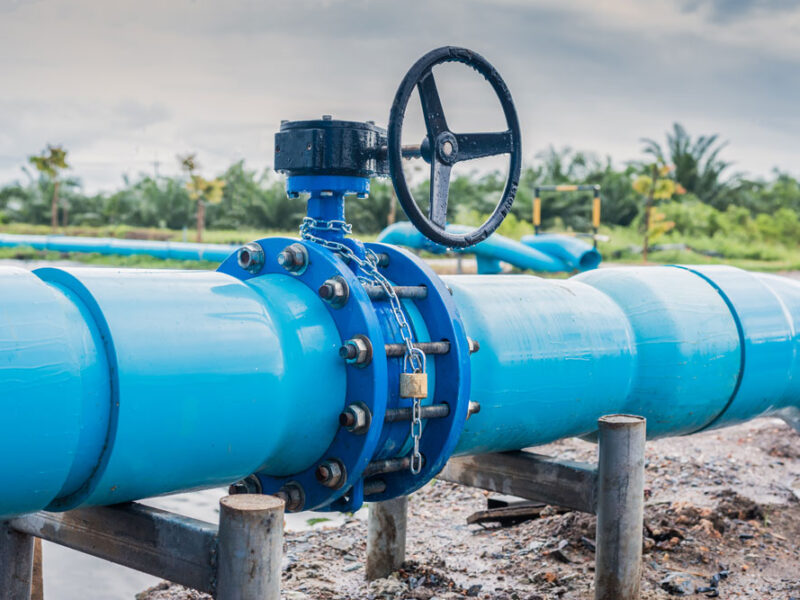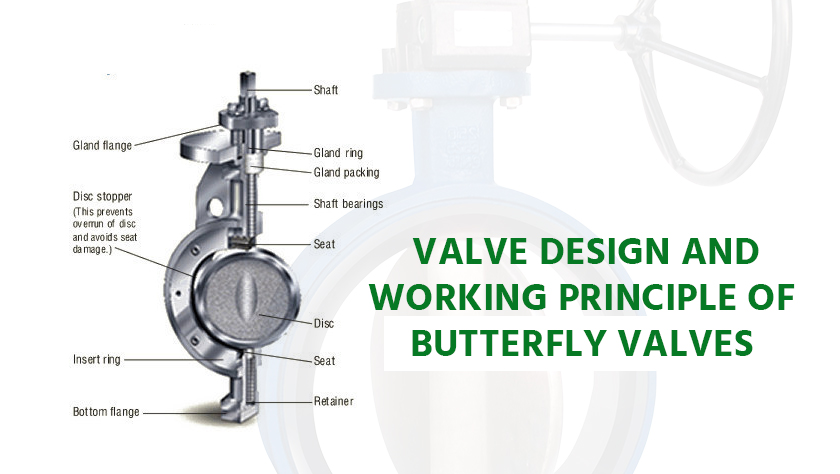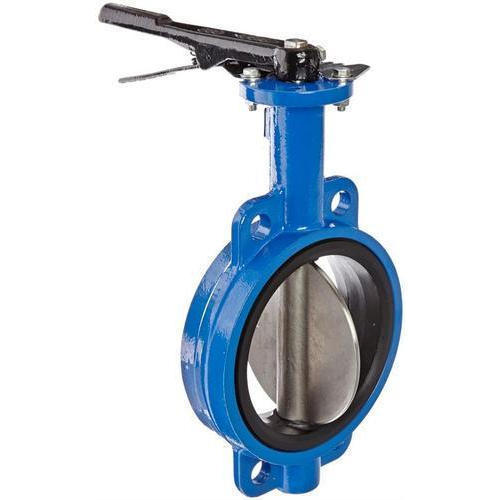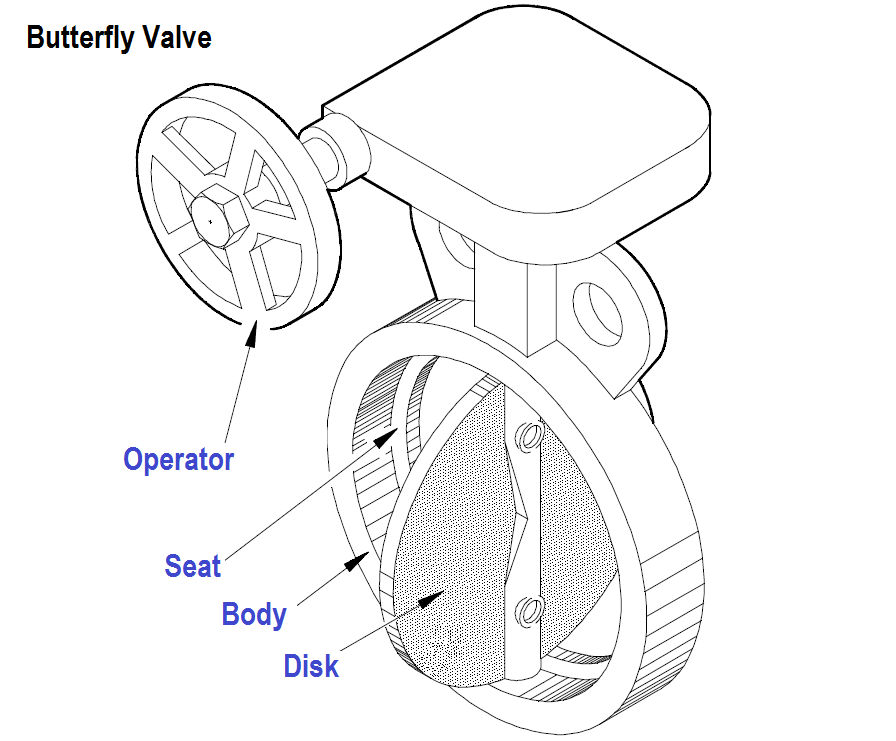
BCST butterfly valve is a valve that opens, closes, or regulates the flow of the medium with a reciprocal rotation of about 90° of the disc-type opening and closing member. The butterfly valve is not only simple in structure but also tiny in size and light in weight. Therefore, butterfly valve material consumption is more economical, and the installation size is small. It has a small driving torque and is easy and quick to operate. It also has good flow regulation and sealing characteristics at the same time. It is because it is one of the fastest growing valve types in the last decade. The butterfly valve is widely used, and its variety and number of uses continue to expand. It is also developing towards high temperature, high pressure, large diameter, high sealing, long life, excellent regulating characteristics, and a multi-function valve.The reliability and other quality indicators of butterfly valves have achieved a high level.

With the application of chemically resistant synthetic rubber on butterfly valves, the performance of butterfly valves has been improved. Synthetic rubber has corrosion resistance, erosion resistance, dimensional stability, good resilience, ease of shape, low cost, and so on. Therefore, we can choose synthetic rubber with different properties according to other requirements to meet the working conditions of butterfly valves.
PTFE has strong corrosion resistance, stable performance, not easy to age, low coefficient of friction, and other characteristics. Moreover, it is easy to shape and dimensionally stable. And it can improve its comprehensive performance by filling and adding appropriate materials to obtain a butterfly valve sealing material with better strength and lower coefficient of friction. In addition, it overcomes the limitations of synthetic rubber. As a result, polymeric materials represented by PTFE and its filler modification materials are widely used in butterfly valves. As a result, the performance of butterfly valves has improved further. And we have also produced butterfly valves with a broader temperature and pressure range, reliable sealing performance, and longer service life.
Metal-sealed butterfly valves have significantly been developed to meet the use requirements of industrial applications such as high and low temperatures, strong erosion, and long life. With the application of high-temperature resistance, low-temperature resistance, strong corrosion resistance, strong erosion resistance, and high-strength alloy materials in the butterfly valve, the metal-sealed butterfly valve has been widely used in the industrial field. BIn addition, butterfly valves with large diameters (9~750mm), high pressure (42.0MPa), and wide temperature range (-196~606℃) have also appeared in the market, thus bringing the technology of butterfly valves to a whole new level.
Butterfly valves have a low flow resistance when fully open. When it opens between approx. 15° and 70°, it again allows for sensitive flow control. As a result, we usually use butterfly valves in large diameter regulation.
BCST butterfly valves can be used for media with suspended solids due to the wiping motion of the butterfly plate. Depending on the strength of the seals, we also use butterfly valves for powdery and granular media.
The pressure drop of a butterfly valve in a pipe is comparatively high, approximately three times that of a gate valve. Therefore, we should take into full consideration the impact of pressure loss on the pipeline system and the strength of the butterfly plate to withstand the pressure of the pipeline medium when it is closed when selecting a butterfly valve. The pressure loss of a butterfly valve in a pipe is relatively high, about three times higher than that of a gate valve. Therefore, when choosing a butterfly valve, we should fully consider the pipeline system affected by the pressure loss and the butterfly plate’s strength to withstand the pressure of the pipeline medium when it is closed. In addition, we must also consider the limits of the working temperature to which the resilient seat material is subjected at high temperatures.
BCST butterfly valve has a small structural length and overall height, with fast opening and closing speeds. And butterfly valves also have good fluid control characteristics. The construction principle of the butterfly valve is best suited to producing large diameter valves. When a butterfly valve is required for flow control use, it is most important to select the correct specification and type of butterfly valve so it can work appropriately and effectively.
Usually, in throttling, regulating control, and slurry media, if the structure needs to be short in length, fast in opening and closing, and low-pressure shut-off (slight differential pressure), we recommend the butterfly valve as the first choice. However, butterfly valves can also be used for throttling and regulation under special conditions requiring strict sealing, severe wear and tear, low temperature (deep cold), and other working conditions.

The structure of the butterfly valve:
BCST butterfly valve mainly consists of the valve body, stem, butterfly plate, and sealing ring. The valve body is cylindrical in shape. It has a short axial length and a built-in butterfly plate.

The features of butterfly Valve:
- BCST can be used to cut off, connect and regulate the medium in the pipeline. It has good fluid control characteristics and closing sealing performance.
- BCST butterfly valve can transport slurry. It accumulates the least liquid at the mouth of the pipeline. At low pressure, the butterfly valve can achieve a good seal. The butterfly valve has good adjustment performance.
- The streamlined design of the butterfly plate results in low fluid resistance losses. It could be regarded as an energy-efficient item.
- The stem is a through-stem structure, which has been tempered and has good comprehensive mechanical properties and resistance to corrosion and scuffing. When the butterfly valve opens and closes, the stem only makes a rotational movement. It does not make lifting operations, packing the stem is not easy to destroy, and the seal is reliable. The stem is fixed with the butterfly plate taper pin, and the outer extension is an anti-flush-out design. It can prevent the stem from accidentally breaking out when it is connected to the butterfly plate.
- BCST butterfly valve connection methods are flange connection, butt-clamp connection, butt-weld connection, and lug butt-clamp connection.
The actuators are manual, worm gear, electric, pneumatic, hydraulic, electro-hydraulic, and other actuators.
The BCST butterfly valve can be controlled from a distance and operated automatically.






